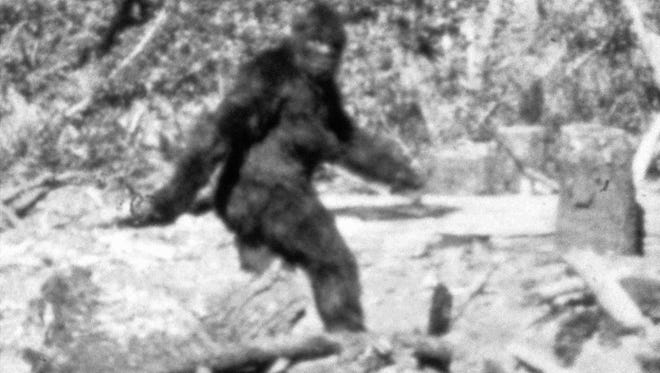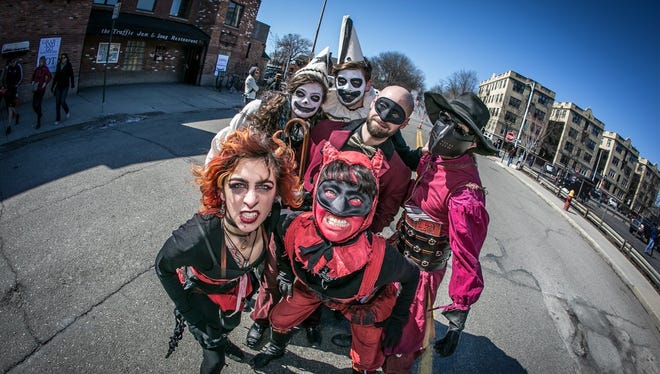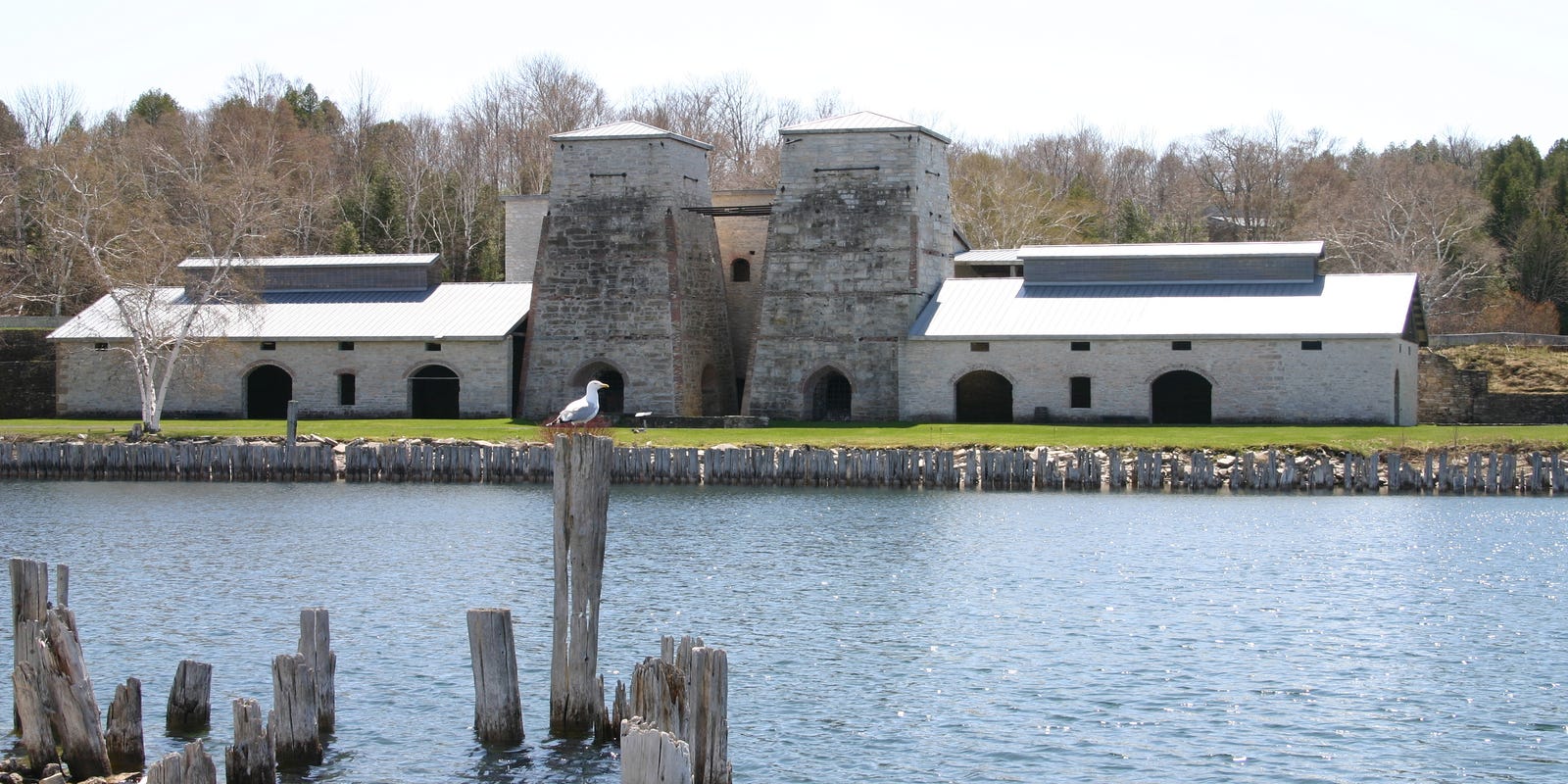# Michigan’s Landscape: Exploring Folklore, Cryptids and Cultural Legends
Michigan’s forests, lakes, and isolated communities have long been ground for folklore, creating stories that reflect the state’s diverse cultural heritage and natural landscapes. From the howls of the Dogman echoing through northern woods to the legends of underwater monsters in the Great Lakes, Michigan scary stories have become deeply embedded in the state’s cultural identity. These tales serve not just as entertainment around campfires, but as living connections to Michigan’s past, reflecting historical anxieties, cultural exchanges, and the human tendency to make sense of the unexplained.
The state’s collection of cryptids – creatures whose existence remains unverified by science – represents one of the richest catalogs of mysterious beings in America. Michigan’s position at the crossroads of multiple cultural influences, from Native American traditions to European immigrant beliefs, has created a unique mythological system. These stories, understood literally or metaphorically, continue to capture the imagination of residents and visitors alike. The enduring power of Michigan folklore lies in its ability to transform ordinary landscapes into spaces of possibility, where ancient beings might still roam the forests and supernatural forces might explain the inexplicable events that punctuate human experience.

- A still from the famous 1967 Patterson-Gimlin film, believed by many to depict Bigfoot. Source: @LSJNews – lansingstatejournal.com
The Dogman stands as perhaps Michigan’s most famous cryptid, first popularized through a 1987 April Fool’s Day radio segment called “The Legend” by Steve Cook. This canine-human hybrid, described as having a man’s body with a dog’s head, or as a wolf that walks upright, has reportedly been sighted throughout northern Michigan for decades. What began as a radio prank quickly evolved into a statewide phenomenon when listeners began calling in with their own encounters, insisting the creature was no joke. According to researcher Linda Godfrey, the Dogman might have roots in Native American legends of shapeshifting warriors who donned wolf pelts before battle, creating the impression of transforming humans.
Equally intriguing among Michigan’s cryptid population are the Melon Heads – small, reclusive beings with abnormally large heads said to inhabit the woods near Saugatuck’s Felt Mansion. Legends suggest these creatures originated from escaped patients of a medical facility where a mysterious doctor performed experiments on children with hydrocephalus. Similar communities of misfit humanoids appear in folklore across the country, suggesting a common human fear of the “other” living just beyond civilization’s edge. These tales originated from actual historical institutions in the area or simply from schoolyard taunting of private school students (once called “melon heads” by public school children), the legend has become firmly entrenched in western Michigan’s cultural landscape.

- Actors in costume at the 2014 Marche du Nain Rouge, celebrating Detroit’s folklore. Source: @LSJNews – lansingstatejournal.com
The waters of the Great Lakes have spawned their own collection of legends and tales about mysterious creatures lurking beneath the surface. Most notable is “Pressie,” named after the Presque Isle River where it enters Lake Superior. Described as a serpent-like creature with multiple humps visible above the water’s surface, Pressie belongs to a worldwide tradition of lake monsters that includes Scotland’s famous Loch Ness Monster. While most sightings occurred between 1894 and 1930, occasional reports continue to emerge, including a photograph from 1977 that remains inconclusive. These water-dwelling cryptids connect to Native American folklore about the mishipeshu, an underwater panther with a striped back and long tail that was believed to control the lakes.
Similar serpentine creatures have been reported in the Straits of Mackinac and Lake Leelanau, where early 20th-century witnesses described a creature that extended its neck upright from the water, appearing initially like a log until revealing its eyes to startled boaters. While skeptics suggest mundane explanations – horses covered in lake weeds or floating debris – the persistence of these legends speaks to the mystery and power associated with Michigan’s inland seas. The Great Lakes, with their oceanic characteristics and sometimes treacherous conditions, naturally inspire stories of unknown creatures patrolling their depths, perhaps as a way of personifying the waterways’ unpredictable and sometimes deadly nature.

- Michigan’s ghost towns: Relics of history and mystery in the landscape. Source: @LSJNews – lansingstatejournal.com
Native American folklore forms the foundation of many Michigan legends, with stories of powerful spirits and supernatural beings that were later incorporated into settler traditions. Indigenous oral histories speak of manitous – spirit beings that could inhabit animals, plants, or natural features – creating a landscape alive with meaning and power. These stories weren’t merely entertainment but served as cultural teachings and spiritual guideposts. The Anishinaabe people, including Ojibwe, Potawatomi, and Odawa tribes, shared legends of the wendigo, a malevolent spirit associated with winter, famine, and human weakness, teaching lessons about balance and restraint in harsh environments.
As European settlers arrived in Michigan, they brought their own folklore traditions that gradually merged with Native stories, creating unique hybrid legends that reflected the cultural exchange. Tales of the windigo transformed over time, incorporating elements of European werewolf myths. Similarly, the Nain Rouge of Detroit – a red dwarf figure said to appear before disasters – combines elements of French folklore with Native American spiritual beliefs. This legendary creature reportedly first appeared to Antoine de la Mothe Cadillac, Detroit’s founder, in 1701, and has been spotted before major calamities throughout the city’s history, including the devastating fire of 1805 and the 1967 riots. These tales demonstrate how folklore evolves through cultural contact, creating stories that help communities process historical trauma and make sense of seemingly random misfortunes.
Michigan’s folklore continues to thrive in the modern era, adapting to contemporary concerns while maintaining connections to historical traditions. The legend of the Dogman received new life when Steve Cook’s song “The Legend” became unexpectedly popular, inspiring books, films, and television specials. Similarly, reports of mysterious panthers in suburban Oakland County during the 1980s reflect modern anxieties about wilderness encroaching on developed areas. These stories demonstrate how folklore remains a living tradition, responding to current circumstances while maintaining narrative patterns established over generations.
Perhaps the most visible celebration of Michigan’s folklore traditions is Le Marche du Nain Rouge, a festival established in Detroit in 2010. This annual event transforms the centuries-old legend of the malevolent red dwarf into a community celebration where participants symbolically banish the negative forces represented by the Nain Rouge. Complete with costumes, parades, and theatrical performances, the festival represents how ancient folklore can be reimagined as cultural capital, bringing communities together while acknowledging shared history. Similar events celebrating the Dogman, Bigfoot, and other Michigan cryptids have emerged across the state, creating economic opportunities through tourism while preserving and evolving these distinctive cultural narratives. Through these modern interpretations, Michigan’s rich collection of legends and tales continues to shape the state’s cultural identity, proving that folklore remains a vital expression of collective imagination and shared experience in the twenty-first century.
